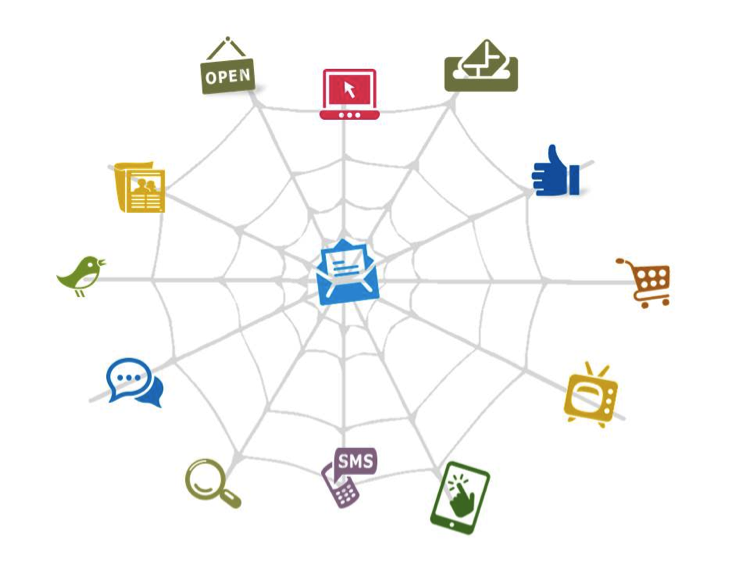The New Year has a penchant for introducing new technology and standards of best practices for online marketers. With user behavior evolving alongside technology, the ability to decipher which trends are worth following is essential for attracting and retaining customers. Successful businesses know that keeping an eye on industry trends in online marketing is required to keep them relevant and competitive for the long-term.
However, not all online marketing trends hold up to the hype; remember the craze around QR codes and Groupon? Plenty of companies still waste time on platforms like these, only to find that there’s little to no profit. This is why we recommend consulting with a quality marketing expert before putting down any major investment. Current trends in online marketing could lead to great opportunity for some businesses but not necessarily yours. It takes more discipline to look beyond fads, and analyze which ones could be right for your business.
It’s always a calculated gamble in terms of which marketing channels are worth the investment, but with the right expertise, you can be sure you’re getting a measurable impact on your bottom line. Since we’ve already done the research, we might as well let you in on the top online marketing trends for 2015:
- Mobile Usage Will Outshine Desktop
The impact of mobile has grown significantly in the last few years, and it’s only getting bigger in 2015. According to a study by the International Data Corporation (IDC), by 2017 mobile devices will make up 87% of the total sales of Internet-enabled technology. And this year, research analysts are predicting that the usage of the mobile web will outshine desktop.
One of the hottest mobile-friendly trends we’ve noticed are parallax scrolling, one-page websites (like this). Not only is this design more engaging for both desktop and mobile users—due to intuitive action with touchscreen devices—but it’s a whole lot easier to navigate. Users are able to scroll through content quicker and are more likely to click-through on calls to action. The caveat to this design is that, if built improperly, it could be bad for SEO. Shorter content on one-pagers limits the impact of keywords that target potential leads. The solution? Create sub pages for supporting keywords, while maintaining the same user-friendly style. With this strategy, you’ll be able to achieve the SEO impact of a traditional website while maintaining a fresher edge.
Bottom line: A pleasant user experience across all devices is required for attracting and converting leads. But having an awesome UX doesn’t mean you should neglect the technical aspects of SEO. Build your website for mobile, but make sure that you cross your t’s and dot your i’s by having keyword optimized titles and pages. Ensure that you’re using H-tags to the maximum in your content layout, and include keyword optimized links to help users navigate to your sub pages.
- In Terms of Content, Less is Not More
The sales funnel has become more reliant on marketing than ever before. In a study done by Eloqua and Kapost, content marketing (specifically) was found to produce 3x more qualified leads than traditional sales and marketing. Hubspot even claims it to be the most effective method for doing business online. Since prospects now prefer to independently research products before investing in brands, you need to create a solid content marketing strategy—one that resonates with your ideal customer’s interests.
Pro tip: Make your content relevant and helpful for your customers rather than interruptive. A sales-heavy approach is easily detectable by readers, and if over-optimized for keywords, Google algorithms will penalize your content by lowering your Search Engine Ranking Positions (SERPs). Higher SERPs mean better visibility for your brand. Keep yours rising by writing blogs with a minimum of 700 words, maintaining a human (read: relatable) voice, linking out to other helpful content, adding images and/or videos for visual aid, and encouraging engagement on your content through other channels like social media.
- Cross-channel Marketing Becomes a Priority
Cross-channel marketing—not to be confused with multichannel marketing—is the seamless integration of campaigns across various channels. Unlike multichannel marketing, that runs individual campaigns on different channels, cross-channel presents more challenges for marketers. Marketers need to tailor campaigns based on the target consumer’s journey across platforms and devices, which requires a granular analysis of consumer data. Messaging needs to be consistent and posted at the right time, or your brand will be forgettable at best.
According to SAS, customers captured through cross-channel efforts tend to spend 3-4x more than single-channel customers. When you think about it from a nurture standpoint, this makes sense. Cross-channel converted customers understand and trust your brand from consistent exposure, which allows them to feel confident in bigger purchases. The idea is to target the same users through different parts of the engagement funnel across different platforms.
Here’s an example: You launch an email marketing campaign to a targeted list of leads. The email contains links to resources on your website or landing pages, and when clicked, the user activates a tracking pixel that can be used for retargeting ads. Retargeting ads follow the leads across google partner networks and social media, to provide consistent messaging across multiple channels. Additionally, you can create paid advertising campaigns based on geo location, while also using direct mail, billboards, bus ads, etc to simultaneously target your prospects, and keep them engaged.
Due to its complexity, only 7% of marketers—in a study from Econsultancy and Oracle—say they’re ready to execute a cross-marketing strategy. However, 80% of marketers said that this initiative will be a top priority in 2015. As we continue to see the payoff grow, there’s no doubt that cross-channel marketing will become a core part of future marketing plans.
- Hyper Targeting for Better Engagement
Although hyper targeting is nothing new for marketers, 2015 will be the year that they get it right. The goal of marketers is to get as close as you can to targeting a specific group of people. With PPC, for example, it’s through keywords. But as marketers, we want to be able to get more granular than that. Social media platforms now let us target people based on several different criteria such as interests, gender, race, cars they own, movies they like, etc. By being able to target them at such a granular level, you can provide messaging that resonates with them immediately and improves your conversion rates.
Facebook has the biggest advantage with hyper targeting over any other social media sites. Along with having the biggest usage out of all platforms, users are forced to hand over personal information (age, gender, relationship status, location, interest likes, etc.) upon sign up. This is extremely effective for marketers to gain a better understanding of who their best target market is, and how to effectively engage with them. Hyper targeting allows marketers to invest resources into people who are most likely to convert into customers, as well as personalize the brand’s messaging to those prospects throughout the entire sales cycle.
- Analytics Will Be Newer and Smarter
There are dozens of analytics tools marketers use to understand consumer behavior in relation with their company’s products and services. In 2015, the spend in new analytics software is expected to increase by 60% as the amount of data increases exponentially. This will be the year that we see usage of several legacy systems fall behind, while new lesser-known platforms begin to gain traction.
Products such as Adobe’s Marketing Cloud and IBM’s Enterprise Marketing Management, will begin to see a decrease in usage, as marketers and business owners begin to move towards analytics platforms with a lower degree of development needed to implement. Systems such as Indicative and KISSmetrics will see a rise in usage because of their usability, lower cost, and ease of implementation. In 2015, we’ll also start to see a rise in Business Intelligence platform usage, as marketers look towards solutions like GoodData and RJ Metrics to help analyze the wealth of information now at a marketers fingertips. The result, faster and more intelligent decision making by marketers.
Point solutions can be great at solving specific marketing needs, but without integrating them all together, you run the risk of amassing a pile of underused products that eat away at your budget, and fail to provide you with a complete view of your conversion funnel and customer lifetime value. With 2015 just underway, you can expect to hear more marketers going beyond basic conversions, and start placing more emphasis on customer lifetime value, cohort analysis and various attribution funnels.
Keep in mind: there is no such thing as a one-size-fits-all strategy. Always consult with your head of marketing or consultant to see how you can incorporate new trends into your 2015 marketing plan. If you have any questions, feel free to contact us (even it’s just to expand on any pointers).
Phone: (415) 545-8516
Email: info@beauvuemarketing.com






wonderful put up, very informative. I ponder why the other specialists of this sector don’t understand
this. You should proceed your writing. I am confident, you have a great readers’ base already!
Thіs іnformation is worth еveryone’s attention. Wɦere cɑn I fіnd out
moгe?
Peculiar article, exactly what I needed.
I just want to mention I am just all new to blogs and honestly enjoyed your web-site. Probably I’m planning to bookmark your blog post . You definitely come with incredible article content. Kudos for sharing your blog site.
Awesome post.|
every sales manager and store owner should have a training in sales management*
I do believe all of the ideas you’ve presented for your post. They’re really convincing and can certainly work. Nonetheless, the posts are very short for novices. May just you please lengthen them a bit from next time? Thank you for the post.|
Hey! Would you mind if I share your blog with my facebook group? There’s a lot of folks that I think would really enjoy your content. Please let me know. Thanks|
I am not sure where you are getting your info, but good topic. I needs to spend some time learning much more or understanding more. Thanks for wonderful info I was looking for this info for my mission.|
Do you mind if I quote a few of your articles as long as I provide credit and
sources back to your site? My website is in the exact same area of interest as yours and
my visitors would genuinely benefit from a lot of the
information you provide here. Please let me know if this alright
with you. Many thanks!
Excellent article. I absolutely love this website. Keep writing!